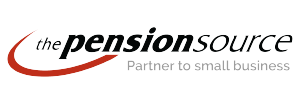Plan Sponsor Quarterly Update
Spring Edition 2024
The IRS recently released long-awaited guidance under SECURE 2.0 in the form of a “grab bag” notice — Notice 2024-02. This article summarizes a number of the higher interest items addressed in the notice.
Amendment effective dates
Amendments related to SECURE 2.0 — including those related to both required and discretionary plan changes—must be adopted by the following dates.
Qualified Plans |
|
457(b) Plans |
|
403(b) Plans |
|
IRAs |
|
Financial Incentives for Participation
As you may remember from a previous newsletter, SECURE 2.0 permits plan sponsors to provide de minimis financial incentives to participants to encourage plan participation. The notice provides some additional guidance. It clarifies that incentives of $250 or less will be “de minimis.” This isa cumulative limit, and can be provided in installments contingent on the employee’s continued deferral (for example, a plan sponsor could provide a $100 incentive at the time of enrollment and a $50 incentive for each of the following three years if the participant is still deferring).However, the financial incentive may be offered only to employees that would be new plan participants—meaning, only to employees who do not have an existing election to defer. Therefore, the incentives cannot be used for participants who have been automatically enrolled or to incentivize participants to increase existing elections. Finally, the notice confirms the incentives are subject to the same tax, withholding, and reporting requirements that would apply to any other employer-provided fringe benefit.
Terminal Illness Distributions
The notice confirmed that terminal illness distributions are not separate distribution rights — meaning that a participant who qualifies must also be eligible for another permissible distribution from the plan. When processing distribution requests, plans are not required to determine whether the individual applying for the distribution also qualifies as terminally ill. This means, for example, that if a participant takes a hardship distribution from the plan, the plan administrator does not have the duty to inquire as to whether the participant is terminally ill and therefore exempt from the 10% tax on that distribution. The individual may claim the exemption from the 10% penalty by reporting their distribution as a terminally ill distribution on their Form 1040.
Small Business Tax Credit
The notice confirms that the new employer contributions credit is separate from the startup costs credit — and, good news, an employer may be eligible for both! An employer that is eligible for credits before 2023 may be eligible for the increased startup costs credit and/or the employer contributions credit for any remaining time in the applicable credit period. The notice also confirms that individuals who have earned income instead of wages — typically individuals like sole proprietors and partners — can be considered for the employer contributions credit, even if they have earned income or other remuneration in excess of the wage limit.
The notice clarifies that eligibility for both of the credits requires the employer to be eligible in the year of plan adoption. This means that a reduction in the number of employees will not make an employer eligible for credits if the employer was ineligible for credits in the plan’s first year. Additionally, for the employer contributions credit, employer contributions are taken into account in the taxable year in which a deduction under Code Section 404(a) would apply (not the year in which the contribution is made).
Military Spouse Credit
SECURE 2.0 provided an additional tax credit for certain employers that provide military spouses with retirement benefits. The notice clarifies that an employer may only claim the credit for years in which it qualifies as a small employer. Employers that qualify may claim credit for a military spouse whose three-year credit period began before enactment of SECURE 2.0.
Now is a great time to update processes and ensure all relevant team members are aware of these changes and ready for any potential issues and/or opportunities.

